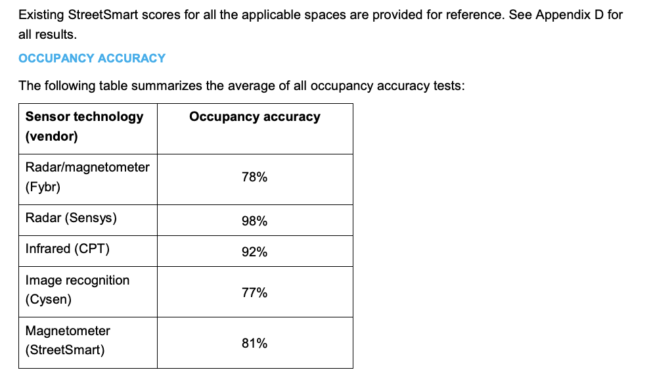
What Sensor-Precision Means
Precision can mean many things, even something as well defined as statistical precision. I found I need to explain this too many times, so it merits a short note.
When someone tells me that something is 98% precise, I always have to remember that they may mean something different from what I need.
Sensors are precise. These days we can find parking-spot sensors that combine capabilities and reach 95% precision reliably. Here is a somewhat dated summary of parking-sensors precision, as reported in an article by SFGate (sensors today are better, but they do not surpass 98% (please comment below to correct me if you know otherwise)).
But what do those numbers mean? Accuracy of 98% in this table probably means that a sensor would report a parking spot 98% of the times when it is available, and would report that a spot is occupied 98% of the times when it is indeed occupied. (This is stronger than the definition of statistical Accuracy because it implies 98% precision on both sides, but I’ll take that stronger definition to make my point below.)
Precise Sensors can lead to Imprecise Performance
A typical driver looking for parking needs to know if a street has at least one parking spot available. With a sensor of 98% precision, we have 2% error per spot.
So a typical street of 20 parking spots that is fully occupied and without any parking available has probability (1-0.98²⁰) of reporting an available spot, meaning that the reporting for the street is only 67% correct!
Of course, this example assumes independence between sensors. Different factors affect sensors in a correlated way, such as weather, leaves and litter, sensor-model failures, etc. Correlations between those sensors indeed lead to different analysis, but the point still holds: when you try to tell me that your sensor is 99% precise, please tell me about the distribution of those 1% failures so I can correctly draw conclusions for my task.


